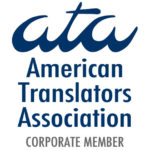Last week, Transpanish offered tips to understand the difference between interpretation and translation and a guide to pricing. This week, we will focus on how to choose the best translator for your needs.
Here are some key questions to ask as you start the process of choosing a translation agency or freelance translator:
1. Does the translator only translate into her native language?
As a general rule, translators should only translate from their non-native language and into their native language. This is mainly because, no matter how proficient someone is in speaking and writing in a second language, there will always be nuances and phrasing that only native speakers can get right. Of course, this isn’t a hard and fast rule, as there are translators out there who have spent so much time writing and reading in their non-native language that they are just a step away from being a native speaker.
2. Do I just need translation services or are there other add-ons that I will need?
If you need services such as desktop publishing, graphic design, or project management, you may want to go with a larger translation agency which can provide the highest quality for these value-added services. If you prefer to stick with a freelance translator, make sure that the translator has extensive experience in these additional services.
3. Does the agency or translator have glowing recommendations?
Ask for references from the agency or translator and check into them. Ask what their experience was like, the quality of the work, and if they’d recommend the service to others.
4. Do you want someone local for face-to-face meetings?
If you think it’s important to have face-to-face time with your agency or freelancer, your choices will be much more limited. But if you’re willing to work with someone available via email, chat, and phone, you can choose the best freelancer or agency independent of their location.
5. Are you willing to pay for quality?
There is a big difference between economical translation services and those that are downright cheap. Be wary of bargain basement translations, as this might be a sign that the freelancer or agency doesn’t provide the highest quality translations. On the other hand, just because a translator has low prices doesn’t mean that they will give you a shoddy translation. It may just mean that they are starting out and don’t have the years of experience that allow them to command higher prices.
Just as with any other service, you will need to shop around, ask questions, and go with your gut. If you choose wrong the first time and end up unhappy with the service, there are thousands of high-quality, well-priced agencies and freelancers that would be thrilled to have your business.



